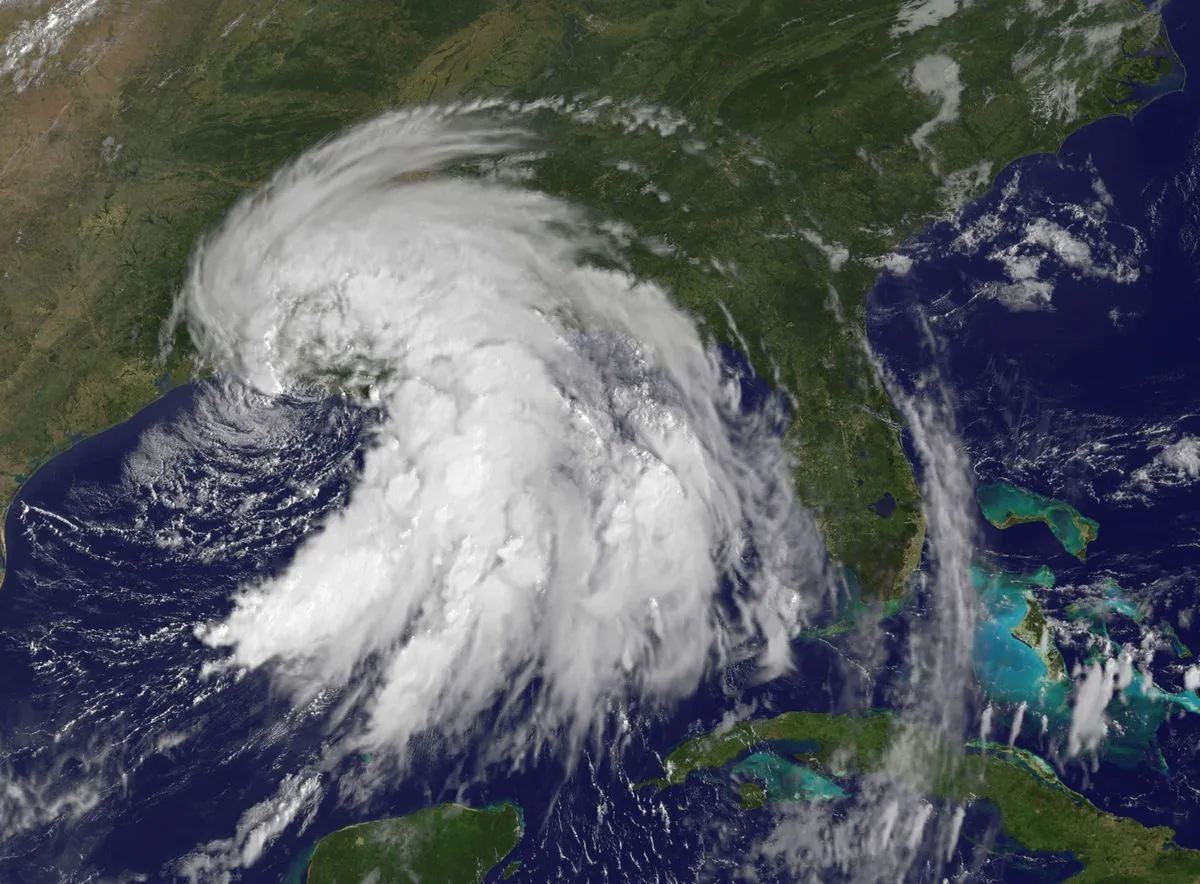Major Hurricane Threat Looms Over Gulf Coast as Storm Intensifies
A powerful storm system near the Cayman Islands is expected to become a major hurricane, threatening Florida, Mexico, and Cuba. Officials warn of potential storm surge, heavy rainfall, and strong winds.

A cluster of thunderstorms near the Cayman Islands is rapidly intensifying, with meteorologists predicting its transformation into a major hurricane as it approaches the Gulf Coast. The National Hurricane Center has issued hurricane watches for several regions, including parts of Florida, Mexico, and Cuba, as the storm system gains strength over the warm waters of the Gulf of Mexico.
The disturbance, currently located approximately 240 kilometers west of Grand Cayman, is expected to evolve into a tropical storm by September 25, 2024, before potentially reaching Category 3 status on the Saffir-Simpson Hurricane Wind Scale. This classification designates it as a major hurricane, capable of causing significant damage to coastal areas and inland regions.
Forecasters anticipate hurricane conditions in parts of Cuba and Mexico by September 25, 2024, with Florida potentially experiencing similar conditions by September 26-27, 2024. The storm's large size is expected to result in widespread impacts, including storm surge, strong winds, and heavy rainfall extending far from its center.

Storm surge watches have been issued for various coastal areas, including Florida's Tampa Bay and Charlotte Harbor. The National Weather Service in Tallahassee has emphasized the severity of the situation, warning that a 3-4.5 meter storm surge is not survivable and urging residents to take potential evacuation orders seriously.
"I have declared a state of emergency in 41 counties to ensure we are fully prepared for this potential major hurricane."
The storm's approach comes at a particularly challenging time for Cuba, especially its capital, Havana. The city is currently grappling with severe water shortages affecting over 130,000 residents, as well as persistent power outages. These pre-existing issues could exacerbate the storm's impact on the island nation.
As the storm system moves northward, it is expected to bring heavy rainfall to the southeastern United States starting September 27, 2024. This precipitation could lead to flash flooding and river flooding in affected areas. Meteorologists predict rainfall totals of up to 15 centimeters in some regions, with isolated areas potentially receiving up to 25 centimeters.
The formation and intensification of this storm system serve as a reminder of the power and unpredictability of tropical cyclones. As climate change continues to influence weather patterns, experts warn that the frequency and intensity of such storms may increase in the coming years.
Residents in potentially affected areas are advised to stay informed about the storm's progress, follow local authorities' instructions, and prepare emergency kits if necessary. The National Hurricane Center and local weather services will continue to provide updates as the situation develops.


































